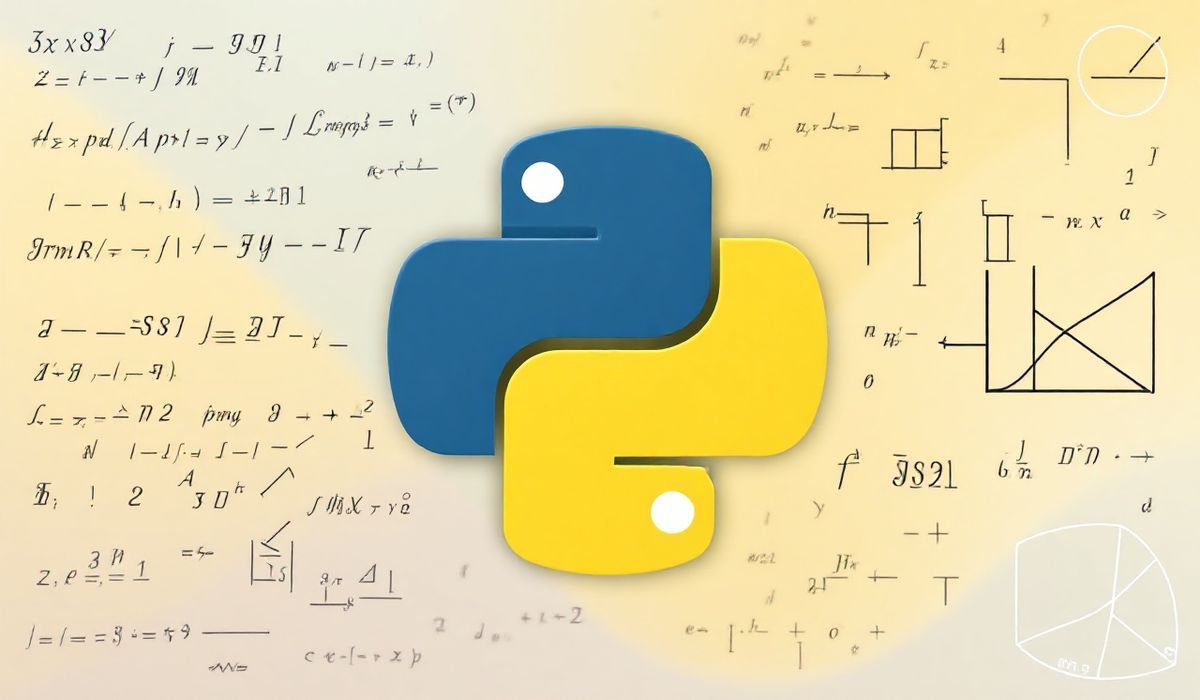Introduction to SymPy
SymPy is a powerful Python library for symbolic mathematics. It provides tools for executing algebraic computations, calculus, equation solving, and more, entirely in Python. Its symbolic nature makes it a go-to library for researchers, educators, and developers working on mathematical-based projects.
Why Use SymPy?
SymPy is built to cater to users who need flexibility and precision in mathematical computations. Its APIs are intuitive, and it integrates seamlessly with Python, making it an excellent choice for both standalone mathematical applications and integration into larger projects.
Basic Usage Examples of SymPy
Below are well-abbreviated examples showcasing dozens of essential SymPy APIs for various mathematical tasks.
1. Symbol Declaration
from sympy import symbols
x, y = symbols('x y')
print(x + y) # Output: x + y
2. Simplification
from sympy import simplify
expr = simplify("(x**2 + 2*x + 1) / (x + 1)")
print(expr) # Output: x + 1
3. Solving Equations
from sympy import Eq, solve equation = Eq(x**2 - 2, 0) roots = solve(equation, x) print(roots) # Output: [-sqrt(2), sqrt(2)]
4. Calculus Operations
Differentiation and Integration are straightforward in SymPy.
Differentiation
from sympy import diff derivative = diff(x**3, x) print(derivative) # Output: 3*x**2
Integration
from sympy import integrate integral = integrate(x**3, x) print(integral) # Output: x**4 / 4
5. Matrix Operations
from sympy import Matrix
matrix = Matrix([[1, 2], [3, 4]])
determinant = matrix.det()
inverse = matrix.inv()
print(f"Determinant: {determinant}, Inverse: {inverse}")
6. Series Expansion
from sympy import series, exp expansion = series(exp(x), x, 0, 5) print(expansion) # Output: 1 + x + x**2/2 + x**3/6 + x**4/24 + O(x**5)
7. Plotting
from sympy.plotting import plot plot(x**2, (x, -10, 10))
8. Solving Systems of Equations
from sympy import solve
solutions = solve([x + y - 2, x - y - 0], (x, y))
print(solutions) # Output: {x: 1, y: 1}
9. Boolean Algebra
from sympy import Or, And, Not expr = And(Or(x, y), Not(x)) print(expr.simplify()) # Output: And(Not(x), y)
SymPy Application Example: Loan Repayment Calculator
Below is an example of a practical application that uses SymPy to calculate loan repayments symbolically.
from sympy import symbols, Eq, solve
# Symbolic variables
principal, rate, time, repayment = symbols('principal rate time repayment')
# Equation for monthly repayment
equation = Eq(repayment, principal * rate * (1 + rate)**time / ((1 + rate)**time - 1))
# Solve for repayment when other values are known
values = {principal: 100000, rate: 0.05 / 12, time: 12 * 30} # $100,000 loan for 30 years at 5% annual rate
monthly_repayment = solve(equation.subs(values), repayment)
print(monthly_repayment) # Output: [536.82...] (approx.)
This example demonstrates the use of symbolic computation to derive and solve equations for practical financial calculations.
Conclusion
SymPy is a versatile library that serves as a cornerstone for symbolic computation in Python. Its APIs cover a broad spectrum of mathematical domains, making it invaluable for academic, financial, engineering, or scientific applications.




